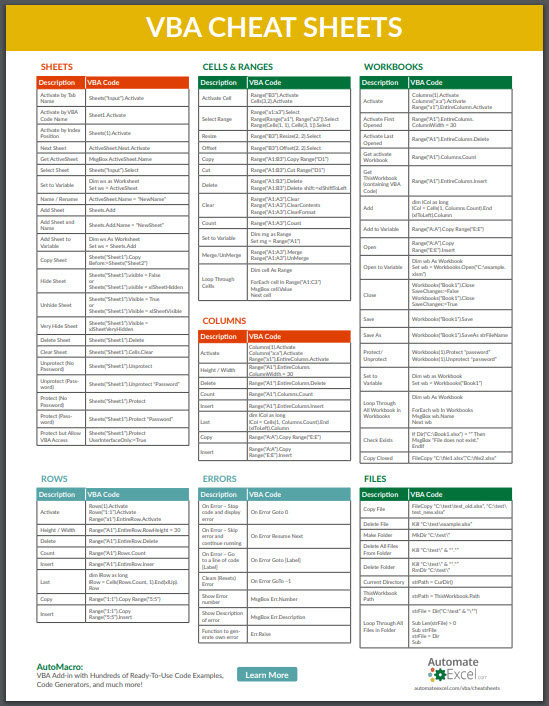Excel Tips: Move or Copy Sheets Easily

Mastering the art of moving or copying sheets in Microsoft Excel can significantly enhance your productivity when working with data. Whether you're consolidating information, organizing workbooks, or simply reordering your data, understanding how to manipulate sheet structure can save you time and streamline your workflow. Let's dive into some practical methods to achieve this effortlessly.
Why Move or Copy Sheets?

Before we delve into the “how,” let’s quickly cover the “why.” Moving or copying sheets in Excel helps in:
- Restructuring workbooks to better suit your analysis or presentation needs.
- Duplicating sheets for creating backups or for template purposes.
- Consolidating data from multiple sources into one workbook for comprehensive reporting.
Using the Contextual Menu

One of the simplest ways to move or copy sheets is through the right-click contextual menu. Here’s how:
- Right-click on the sheet tab you wish to move or copy.
- Select either “Move or Copy” from the dropdown menu.
- In the dialog box that appears, choose where you want to move or copy the sheet within the same workbook or even to another workbook.
- To copy the sheet, make sure to check the “Create a copy” option before clicking OK.
Keyboard Shortcuts

For those who prefer a faster, more direct approach, Excel provides keyboard shortcuts:
- To move a sheet: Select the sheet and press Alt + E (in sequence, not simultaneously), then M, and follow the dialog box instructions.
- To copy a sheet: Use the same keystrokes but press C instead of M, and make sure to check the “Create a copy” box in the dialog.
⚠️ Note: Keyboard shortcuts might differ slightly depending on your Excel version or your operating system.
Dragging Sheets

Excel also allows you to move sheets with your mouse:
- Click and hold the sheet tab you want to move or copy.
- Drag it to the desired position.
- To move, release the mouse button when the black triangle appears in the correct spot.
- To copy, hold down the Ctrl key while dragging and then release.
This visual approach gives you a quick overview of where your sheet will end up.
Using VBA for Advanced Manipulation

If you’re dealing with a lot of data or need to automate repetitive tasks, Visual Basic for Applications (VBA) can be an invaluable tool. Here’s a basic example of how to move or copy sheets using VBA:
Sub MoveOrCopySheet()
' Move the active sheet before Sheet2
ActiveSheet.Move Before:=Worksheets("Sheet2")
' Alternatively, copy the active sheet after Sheet2
ActiveSheet.Copy After:=Worksheets("Sheet2")
End Sub
📌 Note: While VBA offers powerful control, it requires some knowledge of coding. Approach with caution or seek tutorials if you're new to VBA.
Importing and Consolidating Data

Sometimes, you might need to move or copy sheets from external sources into your current workbook. Here’s how to do it:
- Open the workbook containing the sheet you want to copy or move.
- Right-click on the sheet tab, select “Move or Copy”, and in the “To book” dropdown, choose your destination workbook.
- If you’re consolidating data, repeat the process for each sheet and ensure data consistency.
To make the process smoother, consider the following table for different scenarios:
| Scenario | Recommended Method |
|---|---|
| Within same workbook | Use right-click context menu or drag with mouse |
| Across workbooks | Right-click and move or copy dialog, or VBA for bulk operations |
| When ordering is critical | VBA or precise drag and drop |
| Data backup or template creation | VBA for automatic duplication |

By now, you should feel more at ease with moving or copying sheets in Excel, tailoring your workbooks to your specific needs. This flexibility can enhance your data management, project organization, and presentation capabilities in Microsoft Excel. Remember, the goal is to make your work more efficient, so don't shy away from using the method that suits your workflow best.
Can I undo moving or copying sheets?

+
Yes, you can use the “Undo” feature (Ctrl + Z) to revert a recent move or copy action, but be aware that this has limitations depending on other actions taken after the move or copy operation.
What happens if I copy a sheet to a workbook with a similar sheet name?

+
Excel will append a number or symbol to the duplicate sheet name to make it unique. For example, if “Sales” exists, the new sheet might become “Sales (2)”.
Can I copy or move multiple sheets at once?

+
Yes, you can select multiple sheets by holding down the Ctrl key while clicking on sheet tabs. Then, use the same methods described to move or copy them as a group.
How can I protect my sheets from being moved or copied by others?

+
You can protect the workbook’s structure through the “Review” tab in the ribbon. Choose “Protect Workbook”, and uncheck the option for “Move or copy” under “Permissions”.
Is there a difference between moving and copying sheets when using VBA?

+
Yes, the methods differ slightly in VBA. For moving, you use the .Move method, while for copying, you use .Copy. Also, the placement of sheets (before/after another sheet) must be specified.



